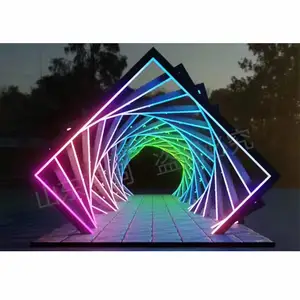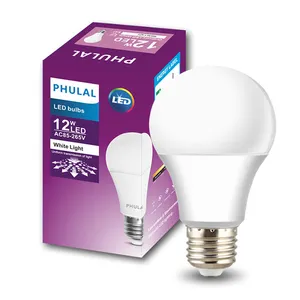Popular in your industry














Related Searches:





















Top categories
About natural lighting light bulbs
Introduction
In an era where sustainability and well-being are at the forefront of our minds, the lighting we choose for our homes plays a pivotal role. This article delves into the world of natural lighting light bulbs, illuminating their science, benefits, and practical applications. We explore how these bulbs, designed to mimic the visible spectrum of sunlight, can enhance our health, productivity, and environmental footprint. We also guide you through the process of selecting the right bulbs for your home, considering factors such as energy efficiency, lifespan, and color rendering index. Finally, we provide tips on installation and maintenance to ensure you get the most out of your lighting solution.
Understanding Natural Lighting Light Bulbs
Natural lighting light bulbs, such as LEDs and halogens, closely approximate daylight, known as 'white light.' LEDs are extremely energy-efficient and provide both directional and diffused light, making them great for overall room illumination. Halogen bulbs, a type of incandescent, cast bright light and colors appear sharper under their light. They're a little more energy efficient than incandescent bulbs, but they're more expensive and burn at a higher temperature. Both these types of bulbs can be used to mimic natural light in your home.
The Science Behind Natural Lighting Light Bulbs
Natural lighting light bulbs, often referred to as full-spectrum bulbs, aim to mimic the visible spectrum of sunlight. They emit light wavelengths similar to those that reach us from the sun, ranging from long (reds) to short (blues) wavelengths. This full-spectrum light is different from 'daylight' bulbs, which often lean towards the blue end of the spectrum. Full-spectrum bulbs offer a more accurate representation of sunlight, providing a balanced color rendering index (CRI) close to natural sunlight's perfect score of 100. This makes them an ideal choice for those seeking the benefits of natural light indoors.
Benefits of Natural Lighting Light Bulbs
Natural light offers numerous benefits for our health and productivity. Exposure to natural light helps our bodies produce Vitamin D, improves our circadian rhythms and sleep patterns, and enhances our focus, leading to increased productivity. Moreover, natural light has been linked to improved mood and reduced stress levels. It's also beneficial for our buildings, contributing to energy efficiency and cost savings. However, with our modern lifestyles, we spend most of our time indoors, making it crucial to find ways to increase our exposure to natural light.
Energy Efficiency and Cost Savings
Harnessing natural light can lead to significant cost savings. By relying less on artificial lighting, households can reduce their electricity bills. Traditional lighting solutions heavily rely on electricity, which comes at a cost to the environment. By utilizing natural light, we can significantly reduce our energy consumption. According to studies, lighting accounts for approximately 15% of all global electricity usage. By maximizing the use of natural light, we can lessen our dependency on artificial lighting during daylight hours, resulting in substantial energy savings.
Health and Well-being
Exposure to natural light, akin to what natural lighting light bulbs provide, is key to our physical and psychological wellbeing. It helps our bodies produce Vitamin D, improves our circadian rhythms and sleep patterns, and even enhances our productivity. Moreover, natural light has been linked to improved focus, efficiency, and reduced absenteeism in the workplace. It also plays a significant role in our mood and mental health, with a lack of daylight often leading to feelings of depression and anxiety. Therefore, incorporating natural lighting light bulbs in our indoor spaces can help us reap these health benefits.
Environmental Impact
Harnessing the power of natural light significantly reduces our energy consumption and carbon footprint. Traditional lighting solutions heavily rely on electricity, which comes at a cost to the environment. By maximizing the use of natural light, we can lessen our dependency on artificial lighting during daylight hours, resulting in substantial energy savings. Furthermore, natural light has become an integral component of green building practices, contributing to a more sustainable future.
Choosing the Right Natural Lighting Light Bulbs for Your Home
When choosing natural lighting light bulbs for your home, consider the Correlated Color Temperature (CCT) and Color Rendering Index (CRI). For a daylight experience, opt for bulbs with CCT values of 4000K and higher. However, going beyond 5000K might make your interior seem sterile and cold. The CRI measures how accurately we perceive colors under different lights, with natural daylight having a CRI of 100%. High-CRI bulbs (90+) offer better color accuracy but are more expensive. Also, be aware that 'daylight bulbs' from home improvement stores are usually 5000K, but their packaging may not reveal the CRI.
Factors to Consider
When choosing natural lighting light bulbs, consider their energy efficiency and lifespan. LEDs are extremely energy-efficient and provide both directional and diffused light, making them great for various applications. However, they may burn out more quickly in areas with frequent power fluctuations. CFLs consume a quarter of the energy that incandescent bulbs do and last 10 times longer. Halogen bulbs give a close approximation of natural daylight, but they're more expensive and burn at a higher temperature. Incandescent bulbs produce a warm, inviting quality but are not as energy efficient as other options.
Top Products
The market offers a variety of natural lighting light bulbs. Some options include dimmable, 60-watt-equivalent LED bulbs that emit a calming white light, non-dimmable LED daylight bulbs, slightly diffused daylight glow bulbs, bulbs that replicate natural sunlight closely and are designed as a sleep-focus lighting solution, and bulbs that offer three levels of brightness and give off a fresh and neutral cast. These options are available from various manufacturers on Alibaba.com.
Installation and Maintenance Tips
To install natural lighting light bulbs, you can use fluorescent light covers or light tube filters. These transform existing bulbs into full-spectrum, daylight-quality light. Installation is generally not difficult and can be done over your existing lighting infrastructure at the office or home. This is an efficient way to immediately improve conditions. Employees or family members with conditions exacerbated by poor lighting will notice a dramatic improvement. The effects of an upgrade in light are often felt almost immediately.
Proper Installation
Installing natural lighting light bulbs in your home is a straightforward process. First, ensure the light switch is off to start the replacement. Carefully remove the old bulb by twisting it in an anti-clockwise direction. Then, install the new natural lighting bulb. After installation, turn on the switch to check if the bulb works and the lighting is satisfactory. Finally, reattach the light cover. Remember, proper installation is key to maximizing the efficiency and lifespan of your natural lighting light bulbs.
Maintenance and Longevity
Proper care and maintenance can extend the lifespan of your natural lighting light bulbs. Regularly check for signs of dirt and accumulated dust on the bulb and wipe as needed. It's also beneficial to review the manufacturer's maintenance tips. Keep in mind that high temperatures can cause technical failures and a drop in performance, so avoid using your bulbs in areas where it gets very hot. Lastly, remember to turn off your bulbs when they're not in use to further prolong their life.
Conclusion
Natural lighting light bulbs offer a green solution that not only reduces our energy consumption but also enhances our well-being. By mimicking the full spectrum of sunlight, these bulbs can help us harness the benefits of natural light indoors, improving our mood, productivity, and overall health. Choosing the right bulb involves considering its energy efficiency, lifespan, and color accuracy. Proper installation and maintenance can further enhance the efficiency and longevity of these bulbs. In essence, natural lighting light bulbs are a step towards a more sustainable and healthier lifestyle, transforming our homes into spaces that nurture both our planet and ourselves.




























